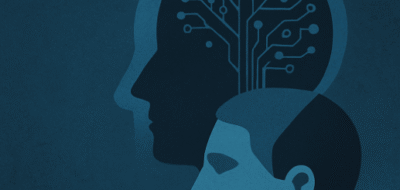Digitization is not a trend. Digitization is already our reality. Currently, a substantial number of entitites operates in the digital world, and the companies that decided to use digitization in their business activities and to stop warding off changes are currently on the stepping curve of development. Last year, new clothing brands that sell its products almost exclusively on-line entered the market, by efficiently using social media (Instagram has become the driving force for many brands).
At the opposite end, there are organizations which support the change – i.e. the banks that, for example, have no Internet access, but only a landline telephone. Apparently, the market still holds some place for digital top students and grumblers, but the question is “how long?”.
It is important to approach the digitization in the right way – it is not the only one project, but investment into the process of changes, implemented over a longer time period. Digitization of some organizations is often very expensive (implementation of Basel II in a global bank costs approx. USD 100 mln), but it is worthwhile making this journey. As every investment, digitization and its particular stages must be of business nature and bring measurable profits. It allows to finance subsequent stages, at least partially, from the profits from the previous stage. Therefore, when we have the prospect of digitl changes, it is impossible to forget about quick wins – e.g. improvement of customer experience by redesigning the websites or eliminating paper from the document flow process. The first effects are already noticeable after a few months. And it does not have to mean increase of revenues/profits. The prevention of the clients’ outflow may often constitute grounds for digitization.
The journey which we are supposed to take will be full of reefs and traps. How to avoid them so as to prevent our ship from running aground? One of the first and most important obstacles to overcome are organizational silos that subsequently create data silos. The services offered to clients must be accepted by different departments and divisions, e.g. the granting of a credit or sale of ICT services. To ensure digital operation of all processes (24/7, multi-channel and immediately), different parts of the organization must efficiently communicate with one another, collaborate and operate in the same manner. However, in the digital and paper age, where we still function, the processes are fragmented, data inconsistent, and companies highly segmented internally. The same client seen through the eyes of marketing and risk department may seem totally different. The employees fill out critical gaps by sharing data in different ways, usually via e-mail, and by using Excel sheets.
Nonetheless, while in the paper era it was sufficient to find skillful officer, in the digital era it is required to look for real talents. In case of digital transformation, we need a critical mass of people who understand it and who know and want to implement the changes. In a short period of time, we are unable to create a team composed of the present employees only. It is necessary to realize the importance of collaboration with the suppliers and consultants of technology as well as brave searching for talents on the market – even, or above all, from different industries. We can talk about technologies and machines, but still it is the human who is the most important part of the system.
During one of the conferences in Warsaw, a moderator asked me during the discussion where the digital journey ended for the companies. Is it a port where we can call at and consider it our home? I am convinced that none of the institutions may feel fully digitized. This process means constant discovery of new possibilities resulting from various technologies – the Internet of Things, data, analytics, and all these things taken together.
Related articles:
– Only God can count that fast – the world of quantum computing
– The invisible web that surrounds us, i.e. the Internet of Things
– End of the world we know, welcome to the digital reality
– The brain – the device that becomes obsolete
– Chernobyl – the bomb is still ticking
– On TESLA and the human right to make mistakes
– Modern technologies, old fears: will robots take our jobs?
– Future of e-commerce in Cuba and prospects of digitalization
– Sagrada Familia and the Internet of Things










Jacek B2
Great piece. Thank you
Norbert Biedrzycki
Thank you very much. Hope you will find next pieces as interesting as this one 🙂
johnbuzz3
With recent advancements in IT technologies, there are tools and techniques now available to manage and process huge amount of data, the digital data, the digital resources. Now it is possible to extract useful information from those digital resources. This has opened up new opportunities to expand the existing applications to make use of the huge amount of data. For example, there are applications that can be migrated from traditional infrastructure to Big data based infrastructure that can support parallel processing of the data by distributing the data across multiple machines. Big data based system mostly moves the business logic to the place where data is stored. There are proofs that businesses were able to use such technologies to mine the digital information they have, could change the way existing processes work. They evolved their business model by using recent advancements in IT. It became a general strategy now for any industry. This is what we can call Digitalization.
Jacek B2
Clearly, in the coming years it will unseat aliens in their role as the prime source of viewer terror.